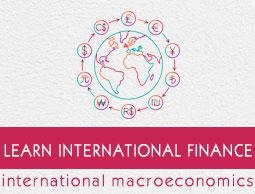Exchange Rate Forecasts
Economists and investors always tend to forecast the future exchange rates so that they can depend on the predictions to derive monetary value. There are different models that are used to find out the future exchange rate of a currency.
However, as is the case with predictions, almost all of these models are full of complexities and none of these can claim to be 100% effective in deriving the exact future exchange rate.
Exchange Rate Forecasts are derived by the computation of value of vis-à-vis other foreign currencies for a definite time period. There are numerous theories to predict exchange rates, but all of them have their own limitations.
Exchange Rate Forecast: Approaches
The two most commonly used methods for forecasting exchange rates are −
Fundamental Approach − This is a forecasting technique that utilizes elementary data related to a country, such as GDP, inflation rates, productivity, balance of trade, and unemployment rate. The principle is that the ‘true worth’ of a currency will eventually be realized at some point of time. This approach is suitable for long-term investments.
Technical Approach − In this approach, the investor sentiment determines the changes in the exchange rate. It makes predictions by making a chart of the patterns. In addition, positioning surveys, moving-average trend-seeking trade rules, and Forex dealers’ customer-flow data are used in this approach.
Exchange Rate Forecast: Models
Some important exchange rate forecast models are discussed below.
Purchasing Power Parity Model
The purchasing power parity (PPP) forecasting approach is based on the Law of One Price. It states that same goods in different countries should have identical prices. For example, this law argues that a chalk in Australia will have the same price as a chalk of equal dimensions in the U.S. (considering the exchange rate and excluding transaction and shipping costs). That is, there will be no arbitrage opportunity to buy cheap in one country and sell at a profit in another.
Depending on the principle, the PPP approach predicts that the exchange rate will adjust by offsetting the price changes occurring due to inflation. For example, say the prices in the U.S. are predicted to go up by 4% over the next year and the prices in Australia are going to rise by only 2%. Then, the inflation differential between America and Australia is:
4% – 2% = 2%
According to this assumption, the prices in the U.S. will rise faster in relation to prices in Australia. Therefore, the PPP approach would predict that the U.S. dollar will depreciate by about 2% to balance the prices in these two countries. So, in case the exchange rate was 90 cents U.S. per one Australian dollar, the PPP would forecast an exchange rate of −
(1 + 0.02) × (US $0.90 per AUS $1) = US $0.918 per AUS $1
So, it would now take 91.8 cents U.S. to buy one Australian dollar.
Relative Economic Strength Model
The relative economic strength model determines the direction of exchange rates by taking into consideration the strength of economic growth in different countries. The idea behind this approach is that a strong economic growth will attract more investments from foreign investors. To purchase these investments in a particular country, the investor will buy the country's currency – increasing the demand and price (appreciation) of the currency of that particular country.
Another factor bringing investors to a country is its interest rates. High interest rates will attract more investors, and the demand for that currency will increase, which would let the currency to appreciate.
Conversely, low interest rates will do the opposite and investors will shy away from investment in a particular country. The investors may even borrow that country's low-priced currency to fund other investments. This was the case when the Japanese yen interest rates were extremely low. This is commonly called carry-trade strategy.
The relative economic strength approach does not exactly forecast the future exchange rate like the PPP approach. It just tells whether a currency is going to appreciate or depreciate.
Econometric Models
It is a method that is used to forecast exchange rates by gathering all relevant factors that may affect a certain currency. It connects all these factors to forecast the exchange rate. The factors are normally from economic theory, but any variable can be added to it if required.
For example, say, a forecaster for a Canadian company has researched factors he thinks would affect the USD/CAD exchange rate. From his research and analysis, he found that the most influential factors are: the interest rate differential (INT), the GDP growth rate differences (GDP), and the income growth rate (IGR) differences.
The econometric model he comes up with is −
USD/CAD (1 year) = z + a(INT) + b(GDP) + c(IGR)
Now, using this model, the variables mentioned, i.e., INT, GDP, and IGR can be used to generate a forecast. The coefficients used (a, b, and c) will affect the exchange rate and will determine its direction (positive or negative).
Time Series Model
The time series model is completely technical and does not include any economic theory. The popular time series approach is known as the autoregressive moving average (ARMA) process.
The rationale is that the past behavior and price patterns can affect the future price behavior and patterns. The data used in this approach is just the time series of data to use the selected parameters to create a workable model.
To conclude, forecasting the exchange rate is an ardent task and that is why many companies and investors just tend to hedge the currency risk. Still, some people believe in forecasting exchange rates and try to find the factors that affect currency-rate movements. For them, the approaches mentioned above are a good point to start with.


